
In 1970, George Lucas needed dozens of actors with shaved heads for his sci-fi dystopian movie THX 1138. He had trouble filling the roles at first, since so few actresses wanted to cut their locks, but Lucas eventually found the extras he needed in a strange utopian community where everyone worshipped sobriety and expressed solidarity by shaving their heads. It was called Synanon, and over the course of three decades it would become one of the weirdest and most vindictive cults of the 20th century.
"Today is the first day of the rest of your life..."
Charles E. Dederich spent the better part of two decades wandering the country as a barely functional drunk. A sales exec from Ohio, Dederich moved to Southern California after his first divorce, and in 1956 gave Alcoholics Anonymous a good faith effort at the insistence of his second wife. She chose to leave him anyway, but the program really resonated with Dederich, who quickly became a sober evangelist for everything AA stood for. Dederich was only dismayed by one fact: AA didn't accept other kinds of substance abusers to their meetings.
Narcotics Anonymous was founded in Los Angeles in 1953, but by the late 1950s (when Dederich was sobering up) the organization was still very disorganized, and NA groups rarely met. So in 1958 Dederich decided to form his own group that, unlike AA, embraced all kinds of addicts. He first called his group the Tender Loving Care club, but soon after renamed it Synanon.
Dederich is credited with a lot of positive innovations early on in his career as a drug rehab guru. He focused on a marginalized group that most institutions wanted nothing to do with. He was said to have coined the phrase "Today is the first day of the rest of your life." He was stern with the people around him, but he believed this tough love was necessary to achieve and maintain sobriety.
But Dederich made it quite clear early on that treating addicts was merely a byproduct of his larger mission. He wanted to create an experimental society that would transform the world. Over the years, the organization grew—it built businesses and started schools—and its goal was no less than a utopian revolution. Synanon was a new way of living, as important to its members as any of the world's major religions.
"This is the kind of revolution that moved the world from Judaism to Catholicism to Protestantism to Synanism," Dederich would insist. "This is a total revolution game."
But as one might anticipate given that kind of rhetoric, a dark side emerged. Not with one single act, but with many small changes that would enable the organization to evolve into something much more dangerous. What was once a small drug rehab facility in sunny Santa Monica would become a violent, abusive and well-funded cult with satellites throughout California and beyond.
The Game Begins
"He was the first person I have ever met that was able to somehow able to cut through the nonsense," one early Synanite said in a film referring to Charles Dederich. "He struck a chord."

That chord was one of supposed honestly, with Dederich's brash and booming voice dominating whatever room he entered. And that booming voice made him a worthy opponent in a brutal form of therapy created by the man himself. It was called The Game.
The Game was most important method of treatment at Synanon. When it came to getting addicts clean, the program rejected any form of pharmaceuticals or tapering of drugs. Everyone went cold turkey, and junkies were left on a couch to writhe and vomit for a few days while they went through withdrawal.
The Game was the medicine administered later, a kind of group therapy invented by Dederich where people sat in a circle to express (and often shout) their frustrations at each other. The confrontational approach was a way to hash out everything that bothered you about others in your group. It was supposed to help you learn about yourself as well. While playing the Game, your frustrations didn't even need to be true. Lying was just one of many strategies in The Game, which could last anywhere from one to 48 hours.
As Rod Janzen notes in his book about Synanon (a book, it should be noted, that's bizarrely sympathetic to the cult and its methods), Dederich's writings suggested that the Game start with a question like "The most boring person in this circle is ____?" or "What really pissed you off most this week?"
On its face, many found The Game to be positive and a constructive (if admittedly unconventional) way to deal with issues within the group. But it would lay the groundwork for the abuse that was to come.
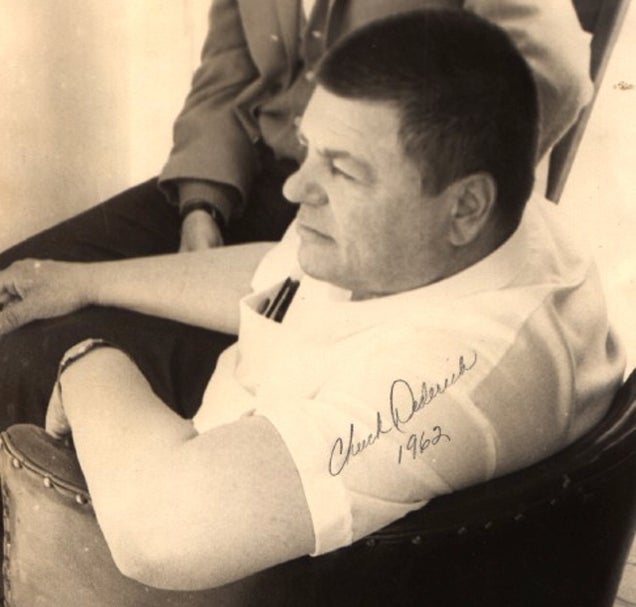
Meeting the Neighbors
Many of Synanon's neighbors in Santa Monica weren't terribly excited to have a drug rehab facility in their neighborhood. The Synanon members faced harassment early on, some of it unjustified and rooted in racism and fear of addicts, some of it seemingly more deserved. In 1961, Dederich spent just under a month in jail for zoning violations and operating a hospital without a license. In this case, he was guilty on both counts.
Those events and persecutions only served to make the Synanites more cohesive as a group, and elevated Dederich to martyr status, suffering unjust incarceration for his beliefs. It also didn't lead anywhere; at this point, the group was firmly committed to non-violence. But it wouldn't be until much later that Synanon would take its revenge. Soon, that would change.
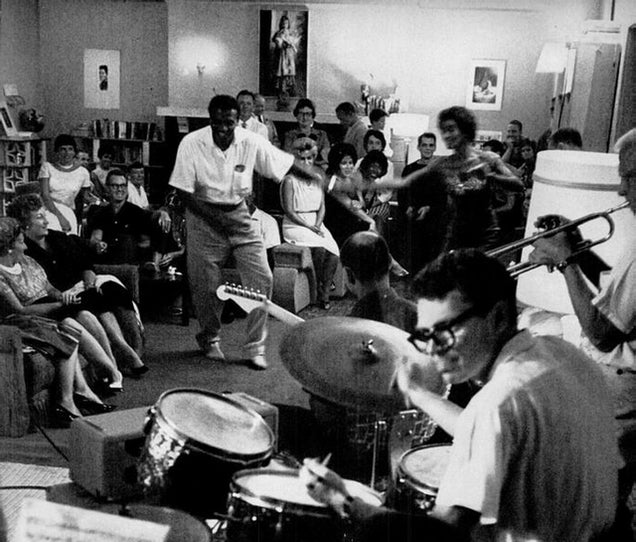
That Hollywood Scene
In the early 1960s, the Synanon house became quite the fashionable hang-out for Hollywood's more cerebral celebrities. Guest speakers in 1963 alone included Twilight Zone creator Rod Serling, legendary sci-fi author Ray Bradbury, and the original host of the Tonight Show, Steve Allen. Other visitors included Leonard Nimoy, Jane Fonda, Charlton Heston, and Milton Berle, among dozens of other curious stars. Synanon had some pretty cool parties, thanks to the fact that so many jazz musicians were around trying to kick their habit.
But it wasn't just the Hollywood elite and L.A. musicians lining up to get a peek at the exciting things happening in Santa Monica. Others who couldn't resist poking their heads in for a look at the program included counterculture drug aficionado Tim Leary, futurist Buckminster Fuller, and labor activist Cesar Chavez.
Politicians also came knocking. Senator Thomas Dodd from Connecticut claimed in 1962 that, "There is indeed a miracle on the beach at Santa Monica." Jerry Brown Jr., the current governor of California, even visited Synanon while with his father in the mid-60s. Synanon was widely held up as a tremendously successful program by countless politicians well into the early 1970s. No wonder, given the kinds of numbers Synanon was reporting.
Dederich's organization insisted recovery rates were anywhere form 80 to 100 percent, though those figures were never confirmed by outside sources for obvious reasons. It simply wasn't true. Some observers claim that fewer than 70 people in Synanon's entire existence—of the thousands who sought treatment—could reasonably have been claimed as rehabilitated, though it's probably somewhere in between these extremes.
It's especially tough to judge rehabilitation rates when a program's founder eventually comes to claim there's no such thing as rehabilitation, and that staying within the organization is the only true path.
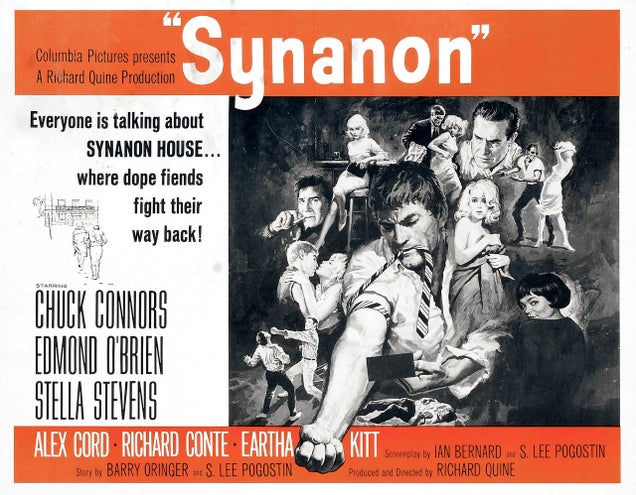
Growth Curve
Starting in 1965, Synanon started buying up land in Marin County, California. It would eventually have three sites in the county, comprising just over 3,300 acres in total, making it the largest private property owner in the county.
That year it also reached a high-watermark of public awareness: It got the Hollywood movie treatment. The film starred Edmund O'Brien as Dederich, and was even filmed on location in Santa Monica with the full cooperation of the Synanon organization.
In 1967, Synanon also purchased a palatial new building in Santa Monica called Club Casa del Mar. First built as a hotel in 1926 and then used by the US Army during World War II, the building sat on a gorgeous spot on the beach. Now a hotel again, you'd never know its bizarre history if you walked inside.
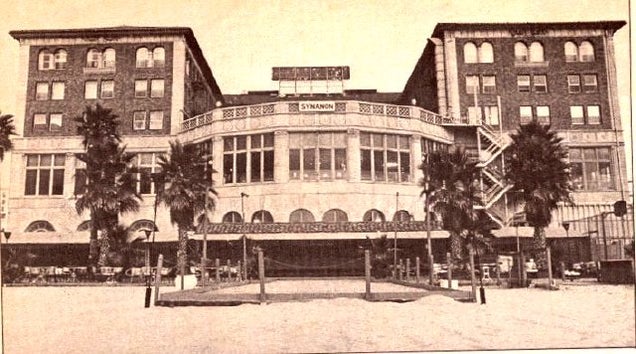
At the same time, Dederich himself abandoned Santa Monica, moving north to his Tomales Bay site. By the mid-1970s, his organization had acquired over 2,000 acres in Tulare County.
One reason for the Synanon's rapid expansion? The organization was fast attracting non-addicts into the fold. Aside from the bevy of celebrities that would make appearances, locals who had never been considered addicts (squares, as Synanon called them) also wanted in. They were reluctantly allowed, and by 1967 Synanon broadened its mission to include "research into the causes of alienation and delinquency."
Synanon's ranks were swelling. After starting in 1958 with just 40 junkies in a rundown building, it now boasted 823 members and some incredibly expensive digs to boot.
Circling the Wagons
By 1968, a new type of Synanon membership was established: the Lifestyler. Members of this group were allowed to have jobs outside of Synanon and live outside of the Synanon community, provided they gave most of their income to the organization. This new kind of member allowed Synanon to fill its coffers with outside money that it had otherwise been reluctant to receive. After all, the organization was leaving a lot of cash on the table by declining government-funded grants. Why? Those grants stipulated that there be some kind of independent examination and verification of success rates through drug tests and the like. These were flatly rejected.
This experiment with Lifestylers wouldn't last long, however, as this type of member was often accused of not being committed enough to the cause. Most Lifestylers washed out of the program, though some joined the ranks fully, leaving their homes behind as a show of true commitment.
By 1968, the group was becoming even more isolationist, with Dederich declaring that it would no longer graduate any of their members. This meant that no addict who kicked their addiction would be allowed to "graduate" to a life outside of Synanon. What little pretense the group had about helping addicts rejoin the outside world had been dropped. Synanon was now the only place to be, a narrowly focused utopian experiment that was ready to swallow you whole.
After the massive expansion into all parts of California, not to mention satellite offices in places as far out as Detroit, the business side of the organization was growing tremendously. In 1968, Synanon was bringing in roughly $1.2 million from its various businesses, including gas stations and a manufacturer of branded promotional items. By 1976 it was grossing $8.7 million, with estimated assets of over $30 million.
Raising Kids
Children inside the Synanon cult were raised communally. This was a common practice romanticized by utopian communities of the 19th and 20th century (including in Upton Sinclair's failed Helicon Home Colony
Parents had highly restricted access to their children after they reached the age of about 6-9 months. By the end of the 1960s, adult members might only see their kids once a week, even if they wanted to see them more often. The policies dictating how often a given member could see their children became more and more restrictive throughout the 1960s, and by 1972 Dederich had proposed that the children from every California branch be moved to a single site in Marin County. This was quite obviously a way for Dederich to better control his followers. But for many people, it was the final straw. According to Janzen, between 200 and 300 people left the organization after this new policy was proposed.
"Dederich and others displayed a good-riddance attitude," Janzen writes in The Rise and Fall of Synanon. "Those who left lacked commitment to Synanon's new utopian vision, they said." The choice was clear: Your family, or that of Synanon.

LSD and Do As I Say
Synanon was a completely drug-free environment, save for aspirin, caffeine and nicotine. But there was another drug that Dederich didn't consider harmful. In fact, he credited this drug with expanding his mind and allowing him to create the Synanon program in the first place. That drug was LSD.
Early on, Dederich's experience with LSD at UCLA, under the supervision of doctors, was written about with the kind of mythical terminology that you'd expect of a charismatic leader. In 1961, one admirer profiling the group explained that Dederich was not affected by the LSD as some commoners might be:
Chuck was an atypical patient in that he experienced no regression, no sensory enhancement or hallucinations. During the active period of LSD intoxication, his normal traits appeared merely in a sort of caricature. One phrase that came into his mind impressed him: "It doesn't matter, but, at the same time it matters exquisitely." He would go to his room and give way to tears for an hour or more every day. Even with the seeming grief, there was euphoria.
He was seemingly stronger than powerful hallucinogens. And yet he would credit them with inspiring him to start Synanon. Sometimes his philosophy was do as I say, not as I do. Other times, it was explicitly, do exactly as I do.
In 1970, Dederich decided that he should quit smoking for health reasons. Once a safe-haven for nicotine, with centers filled with smoke, Synanon banned smoking for everybody. This top-down control over the lives of Synanites was common, and would ultimately contribute to its violent transition. Dederich would act on impulse, rationalize his behavior, and then claim that had been the plan all along.
A pivotal moment occurred in 1973 when a woman was speaking disrespectfully of Dederich's wife Betty during a session of the Game. This, of course, was part of the Game, but for whatever reason, this time Dederich took it very personally.
Dederich grabbed a can of soda and poured it on the woman. At first, he apologized, but he almost immediately recanted his apology and rationalized his behavior as justified. "I gave the woman a lesson in manners," he explained.

Finding Religion
In 1974, Synanon moved to become recognized as a religion. The organization was running up against troubles with the IRS and had realized, much like other self-help cults of the 20th century, that being recognized as a religion could help it maintain tax-exempt status.
After abandoning drug treatment as its sole mission in the 1960s, Synanon could no longer claim to be simply a non-profit organization. And its substantial for-profit businesses weren't helping its case. Becoming a full-fledged religion was the best way to protect its massive holdings from the tax man.
It didn't work, though. The IRS never officially recognized Synanon as a religion, though it would be at least another decade before it finally stripped the company of its tax-exempt status.

Death and Embracing Violence
At same time it was claiming its religious rights, Synanon stepped up its use of violence within its ranks. Suspected "spies" were severely beaten. Teenagers sent to Synanon to help cure juvenile delinquency were regularly physically abused for insubordination. Everyone in the group started shaving their heads. Things were gradually, but steadily, getting worse inside the sober cult of Synanon.
Dederich was also becoming less interested in having any children around, telling many members that if they wanted to have kids they probably shouldn't be a part of Synanon. "I understand it's more like crapping a football than anything else," Dederich would say about childbirth in 1976.
By January of 1977, Dederich's distaste for children turned into an official policy. Men were pressured to get vasectomies, and women were shamed into getting abortions. These policies instigated another wave of defections, though Dederich's increasingly inward focus caused him not to care. As Rod Janzen notes in his book about Synanon, one member told Dederich, "I'll give you my life, Chuck, but not my balls." Notably, Dederich didn't get a vasectomy himself. Those that stayed, completely beaten and indoctrinated, didn't seem to care that Dederich had become a tyrant who couldn't even pretend that he held himself to the same standard as other Synanites.
Chuck Dederich's wife Betty died of lung cancer on April 19, 1977. After that, all bets were off. Betty, a strong woman in her own right, seemed to dial back some of Chuck's weirder megalomaniacal tendencies. After her death, nothing could temper his darker desires to control people.
By October of that year, only a few months after the death of his wife, Dederich's policies became even more extreme and controlling. He declared that married Synanites should split up and find new partners. He started by breaking up his own daughter's marriage. About 600 couples were divorced by the following year.
At the same time that Synanon was becoming increasingly militant and strange, it was enjoying substantial support from American businesses as a charitable organization. As Richard Ofshe notes in his 1980 paper The Social Development of the Synanon Cult, there were 20,000 businesses and organizations giving to or interacting with Synanon by the late 1970s, "including one out of five corporations in the Fortune 500 who were listed either as donating or as doing business with the organization."
By the late 1970s, Synanon was going from bad to worse in some terrifying ways. The group's reported purchase of over $200,000 in firearms in 1978 raised plenty of eyebrows. If you were on the fence about Synanon's classification as a cult before, you certainly had fewer doubts now.
In 1978, ex-Synanite Phil Ritter would try to extract his young daughter from the organization and nearly paid with his life. Ritter's wife was still in the organization, and had moved with their child to Synanon's Detroit facility. Ritter sought legal action against the cult and in response, the church sent two men to beat him senseless in his own driveway. He wound up in a coma for a week.
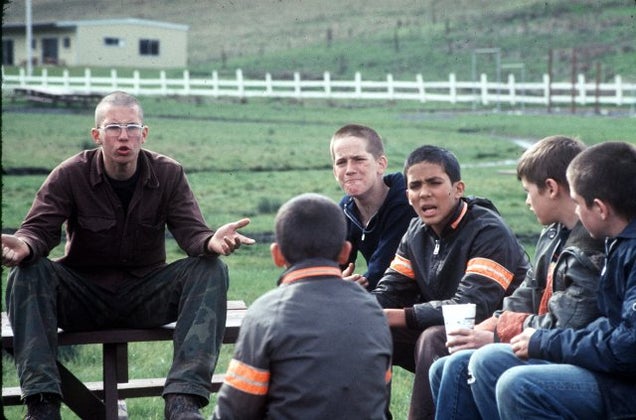
Bad Press
During the 1970s Synanon attracted a fair amount of attention from the media, though unlike the positive press it was getting in the 1960s for its drug rehab "successes," the coverage was overwhelmingly negative.
Major news networks had started slowly reporting on the organization, but much of the legwork that went into exposing Synanon as a violent cult was done by a tiny newspaper with a circulation of only about 1,700. The Point Reyes Light in Marin County was dogged in its pursuit of the Synanon story, which involved child abuse, wrongful imprisonment, assault and misappropriation of funds. Despite being constantly threatened for libel action, the paper didn't back down. The Light even won a Pulitzer Prize in 1979 for its reporting on the organization, something virtually unheard of for a paper of that size.
Members of Synanon didn't take kindly to the criticism. The group lashed out at anyone who dared question their organization; after an expose by NBC in 1978, members sent hundreds of ominous letters to NBC executives, threatening physical harm.
Syanon also spent the 1970s suing anybody who wrote a critical article or aired a negative TV segment about it. In 1972 it sued Hearst Corporation over a San Francisco Examiner article that described the cult as the "racket of the century." When it was finally revealed to the broader public just what a financial and emotional scam Synanon had become, this was no longer considered hyperbole.
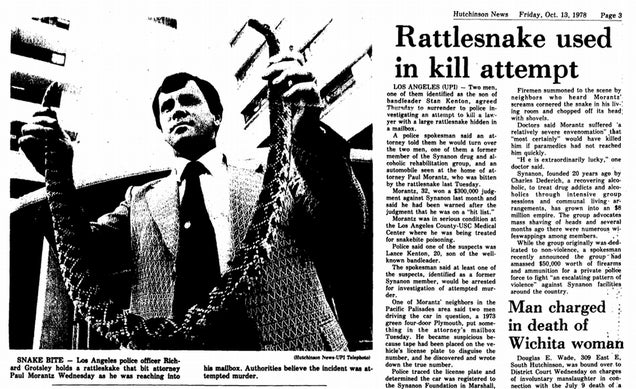
The Rattlesnake
The most famous incidence of the organization's violence—and the one that Americans old enough to remember may recall—was a planned attack by Synanon on a Los Angeles lawyer. It's remembered largely due to the bizarre choice of weapon: a rattlesnake.
Attorney Paul Morantz had successfully represented a young woman who had been held against her will by the cult. Morantz came home on October 10, 1978 to his house in the Pacific Palisades and opened his mailbox, only to be immediately bitten by a rattlesnake. The people who had placed the snake there had removed its rattle so as to keep it quiet. Morantz rushed outside yelling to his neighbors for help.
Thankfully they were able to call an ambulance in time, saving his life after quick and extensive treatment with anti-venom. Two men—20-year-old Lance Kenton and 28-year-old Joseph Musico—were charged with attempted murder, along with Dederich for conspiring to commit it.
Dederich's obsession with recording audio came back to haunt him, as the police produced tapes of him talking about violence and specifically mentioning Morantz's address in the Pacific Palisades. All three plead no contest and Dederich entered into a plea deal that included probation, though he didn't see jail time. The other part of the plea: Dederich would have to step down as head of Synanon.
It should be noted that I filed a Freedom of Information Act request with the FBI for Dederich's file but was told that he had none.
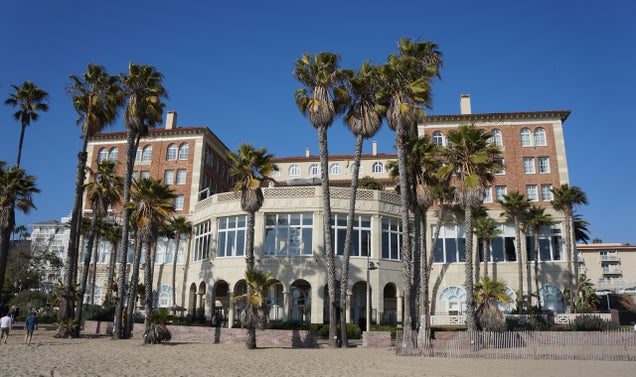
The Dwindling Game
Synanon's reach was relatively limited, and yet everyone that came in contact with the organization left with battle scars. The cult hobbled along throughout the 1980s, badly damaged from their wars in both the press and the courtroom. Who wanted to be associated with the rattlesnake cult?
Synanon was formally stripped of its tax-exempt status in 1991 and completely disbanded shortly after that. Charles E. Dederich died in Visalia, California in 1997.
Relative to other cults of the second half of the 20th century, Synanon wasn't the worst. But if you stuck around with Synanon in the 1970s, you would've felt right at home in some of the most notorious cults of the 1970s and 80s.
Synanon started with what looked like the best of intentions. And the organization still has defenders today. But no matter what the initial goals of this strange community and its heavy-handed leader, there's no denying what it had become: a dangerous cult ultimately tossed on the scrap heap of failed utopias.
Whether dangerous or benign, the utopian impulse is almost always about control. We strive for perfection with small actions, working toward some greater change in our lives; our own slice of heaven. We blind ourselves to the dark undercurrents of our carefully controlled little worlds.
That's what happened at Synanon. Members ignored the greater sins for the smaller ones. As members became more and more invested in the utopian project's minutiae, it became harder and harder to escape. Ultimately, Synanon collapsed under its own utopian hubris—a tyrant's ant farm masquerading as a grand experiment with the good life. And for some of the bruised and battered left in Synanon's wake, its undoing came none too soon.
Images: Top two photos inside the Synanon organization come from the March 9, 1962 issue of Life magazine; Synanon's Santa Monica headquarters circa 1970 via Synanon.org; 1965 movie poster for Synanon via the Movie Poster Database; Screenshot from the 1971 film THX 1138; Richard Grotsley holding a snake in the October 13, 1978 edition of the Hutchinson News in Kansas; Two Synanites Bonnie Cunningham and Ellen Delgado look over the hair they and other women at a Synanon community in Santa Monica shaved off in February 1975 via Associated Press; Charles Dederich in 1979 via the Associated Press; 1978 CBS News screenshot of Connie Chung reporting on Synanon via YouTube; Kids playing the Game circa 1977 via Synanon.org; 2014 photo of the Hotel Casa Del Mar by Matt Novak
Sources: The Rise and Fall of Synanon by Rod Janzen; Synanon: A Therapeutic Life Style by Curt G. Batiste and Lewis Yablonsky (1971); The Anticriminal Society: Synanon by Lewis Yablonsky (1962); Synanon: Toward Building a Humanistic Organization by Steven Simon (1978); The Social Development of the Synanon Cult: The Managerial Strategy of Organizational Transformation by Richard Ofshe (1980); Social Structure and Social Control in Synanon by Richard Ofshe and others (1974); Child Rearing and Education in the Synanon School by Edward Gould (1975); Synanon House – A Consideration of its Implications for American Correction by David Sternberg (1963); The Phenomenon of Self-perpetuation in Synanon-Type Drug Treatment Programs by Donald Scott and Harold L. Goldberg (1973)



























